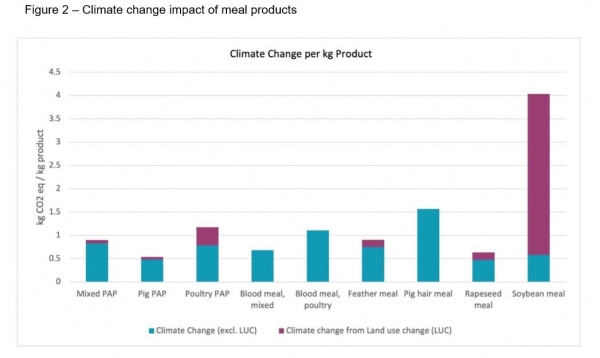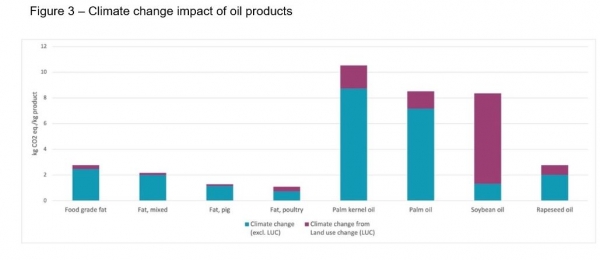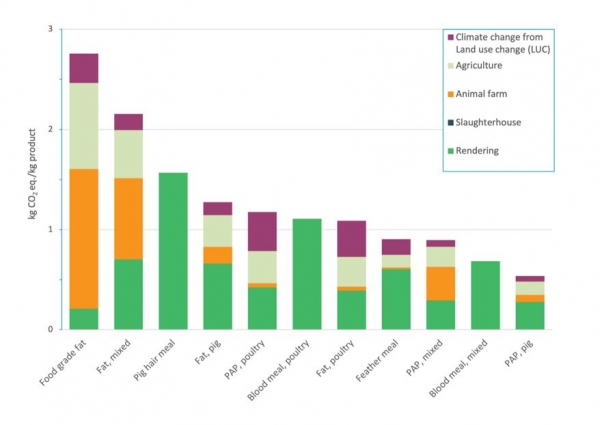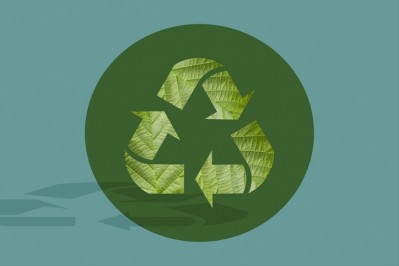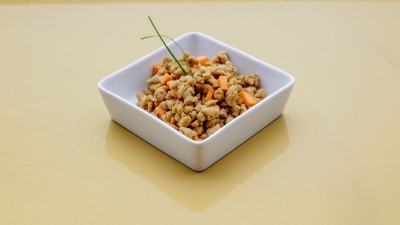EFPRA: Use of animal by-products in EU feed formulations is climate smart

Locally produced processed animal proteins (PAPs) and rendered fat can replace soymeal and palm oil in EU feed formulations, with a net reduction in carbon emissions, said the trade group.
The LCA was conducted by Blonk consultants on behalf of EFPRA. The results, noted the renderers’ association, meet Global Feed LCA Institute (GFLI) standards so ABPs can be directly compared with other feed ingredients on the GFLI database.
Following the partial lifting of the ‘feed ban’ in the EU in autumn 2021, porcine PAPs are permitted in poultry feed, likewise poultry PAPs can now be used in pig feed. There are also markets for PAPs in aqua feed and pet food, and category 3 rendered fat is an important feed ingredient too, according to the organization.
"Overall, the study shows that animal proteins and fats can play a significant role in reducing the environmental impact of feed and pet food. We want to make sure the feed sector is fully aware of this after the reintroduction of pig and poultry PAPs," said EFPRA technical director, Dr Martin Alm.
The LCA data
Fourteen European rendering companies shared their environmental data from 2016-2018 with Blonk consultants; the results cover four types of fat and seven types of protein meal, which reflects the main ABPs available for feed production, said EFPRA.
The Blonk data shows the climate change impact per kg for ABP derived protein products and vegetable alternatives including land use change.
The consultants used a weighted average of the typical sources of soy and rapeseed that are used in European feed formulations, Dr Alm told us. Origins used include European, US and South American soybeans.
Soybean, palm and rapeseed, the vegetable-based alternatives to animal-based proteins and fats, have a higher overall carbon footprint than the ABP derived products, according to the results of the LCA.
“Palm and soy cultivation are highly associated with deforestation activities in Southeast Asia and South America over the last 20 years which is reflected by the relatively high contribution of land use change to climate change impact," argued EFPRA.
Rapeseed is grown in Europe, with some supplementary imports, so it is not associated with significant land use change impact, it added.
Assessing the impact per kg of protein is even more favourable to ABPs because they are richer in protein than the vegetable alternatives, claimed the rendering sector representatives.
"Rapeseed and soybean meal contain 34% and 46% protein respectively whereas PAPs protein content ranges from 50 to 64%; other protein sources such as feather meal and blood meal are even higher. Hence, overall PAPs have a lower carbon footprint than rapeseed meal," it continued.
"Looking at fats, apart from rapeseed oil, all animal fats have a lower environmental footprint than their vegetable oil alternatives. In Europe, animal fats are the primary natural source of hard fats and their vegetable-based alternatives, palm oil or palm kernel oil, have an environmental impact between four to eight times higher," reads the LCA report.
Economic allocation method
PAPs are made from by-products, maintains Dr Alm, so much of the environmental impact is attributed to the primary product: meat, dairy, eggs, etc.
"The analysis uses the economic allocation method, which means that environmental impact is calculated in proportion to the value of the product. To give a simple example, let’s say the meat from one chicken is worth £9 (US$11.4) and all the by-products not consumed by humans are worth £1. That means that 90% of the environmental impact of production is attributed to the meat and 10% to the by-products."
The graph below shows what elements contribute to the carbon emissions of each of the by-products included in the analysis:
"If the slaughterhouse co-products have a relatively high ex-works price, then the environmental impact of ABP products is also relatively high. This is for instance the case for food-grade fat where food-grade co-products from the slaughterhouses are used as raw material input.
"If the slaughterhouse co-products have zero ex-works price such as category 3 blood or category 3 pig hair, there is no impact from slaughterhouse and consequently the animal farm [emissions] and agricultural processes [feed, crop cultivation]. ABP products from these materials, therefore, only have an environmental impact that is related to the rendering processes. This is the case for pig hair meal and blood meal."
EFSA review
EFPRA is expecting the results of a review undertaken by the European Food Safety Authority (EFSA) of the processing steps linked to porcine meal to be released in the coming days.
The regulation partially lifting the feed ban obliges companies to only use certain processing methods – pressure sterilization - when it comes to porcine meal supply to the feed industry. EFSA has been evaluating whether such products can be processed in the same way as poultry meals, and EFPRA hopes the outcome is positive as this would help to lift a technology linked constraint on supplies of PAPs in the EU market.
Renderers long ago switched to an energy efficient method deemed safe for the processing of PAPs for use by the pet food sector and for fertilizer application, Dr Alm remarked earlier this year. “In 20 years of use, there has never been a safety issue when supplying the pet food sector, an industry with stringent safety and quality demands,” said the EFPRA spokesperson.
Moreover, given today’s environment of soaring prices and climate change concerns, processing methods that are proven safe and effective in relation to microbiological contamination, but also sustainable in terms of energy usage, should be the preferred choice, he stressed
Available volumes
There are around 2.8m tons of PAPs available for use in Europe, said EFPRA.
The pet food sector is still the dominant market, the fertilizer segment is also key and aqua feed usage is continually growing, currently hitting around 250,000 tons per annum, with that sector showing a preference for feather meal and poultry meal in terms of PAP components.
However, one third of EU PAP production still goes towards the export market.
Dutch group, AgruniekRijnvallei (AR), was the first EU compound feed supplier to start processing porcine meal for use in poultry feeds, in March 2022, with a handful more mills in Germany and the Netherlands doing the same in the months thereafter. ForFarmers was also an early adopter; the leading European feed producer revealed recently that it has been processing PAP in poultry feed for the past 12 months.
